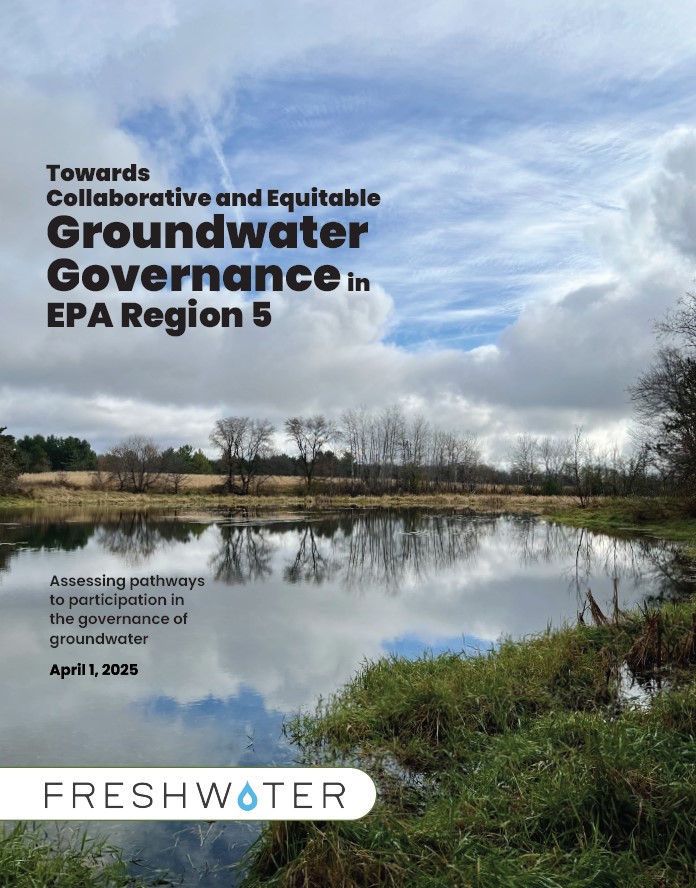Assessing pathways to participation in the governance of groundwater

Water is essential to life, and groundwater has its own unique benefits and limitations on its use. Groundwater is a hidden reservoir supporting biodiverse surface-water ecosystems, human establishments, industries, irrigated agriculture, and more. New and accelerated demand for water-intensive crops, artificial intelligence powered by data centers, and sustainable aviation fuel bring industries to the region. As climate shifts, towns across the United States that grapple with water scarcity look to this area, but there is uncertainty about how to proceed.
Currently, the laws, regulations, ordinances and policies governing the use of groundwater in Tribal, federal, state and local jurisdictions throughout EPA Region 5 are not well-connected. This is largely intentional and a result of the distributed structure of governance in the country. As new interest groups vie for this region’s groundwater, governance gaps create a vulnerability for communities that depend on groundwater to support their basic needs.
At every level, there is a need for cohesive regional water governance, including clarity on which jurisdictions share groundwater and how to collaborate equitably. This report lays out best practices and existing barriers in hopes of developing regional groundwater governance systems based on common understanding that fosters inclusive prosperity, ecological health, and repairs past harm, while being resilient to climate and population stresses over the next generation.
For more information, feel free to contact:
Carrie E Jennings, Freshwater Society
cjennings@freshwater.org
Funding provided by The Joyce Foundation.
Explore this Project by Geography
